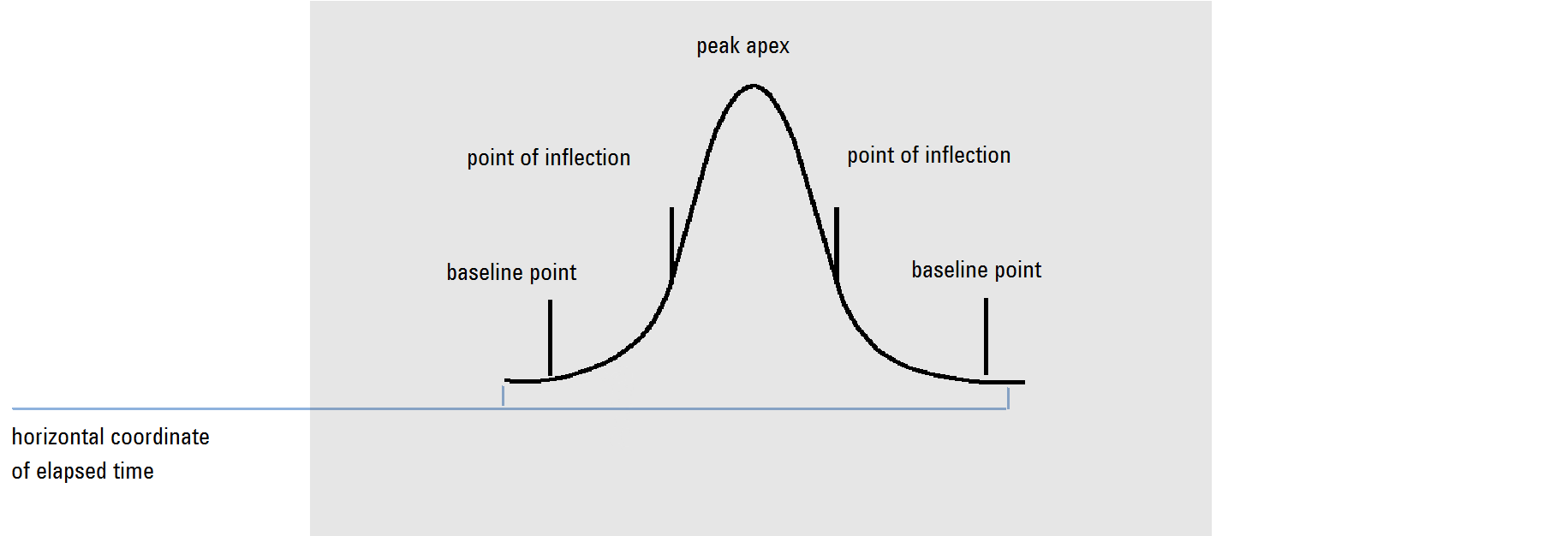Defining the initial baseline
Cardinal points
Because baseline conditions vary according to the application and detector hardware, the integrator uses parameters from both the integration events and the data file to optimize the baseline.
Before the integrator can integrate peaks, it must establish a baseline point. At the beginning of the analysis, the integrator establishes an initial baseline level by taking the first data point as a tentative baseline point. It then attempts to redefine this initial baseline point based on the average of the input signal. If the integrator does not obtain a redefined initial baseline point, it retains the first data point as a potential initial baseline point.
Identifying the cardinal points of a peak
The integrator determines that a peak may be starting when potential baseline points lie outside the baseline envelope, and the baseline curvature exceeds a certain value, as determined by the integrator’s slope sensitivity parameter. If this condition continues, the integrator recognizes that it is on the up-slope of a peak, and the peak is processed.
Start
Slope and curvature within limit: continue tracking the baseline.
Slope and curvature above limit: possibility of a peak.
Slope remains above limit: peak recognized, peak start point defined.
-
Curvature becomes negative: front inflection point defined.
Apex
Slope passes through zero and becomes negative: apex of peak, apex point defined.
Curvature becomes positive: rear inflection point defined.
End
-
Slope and curvature within limit: approaching end of the peak.
Slope and curvature remain within limit: end of peak defined.
The integrator returns to the baseline tracking mode.
